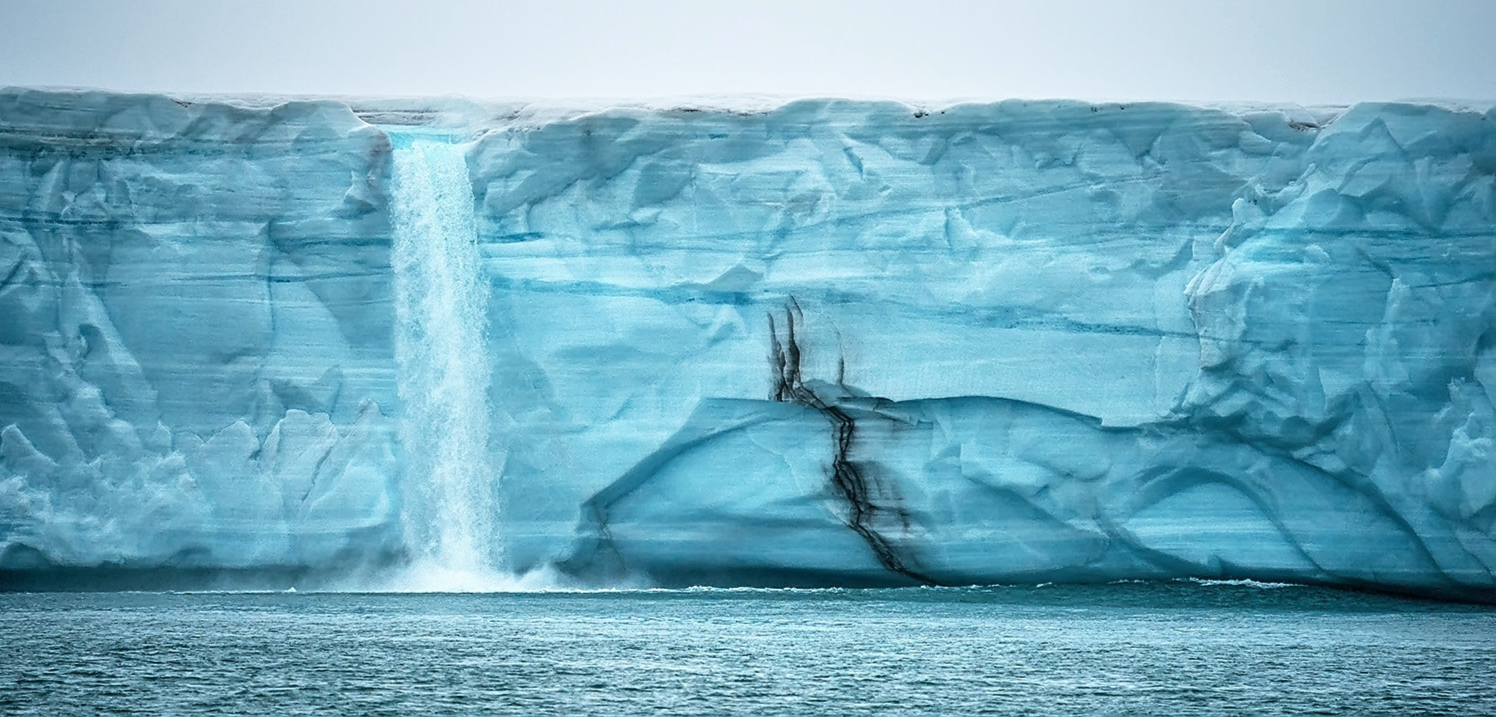Boundary Layer Physics is Key to Predicting Ice-Shelf Melting
The Science
Rapid melting of some ice shelves from below has spurred new research into boundary layer turbulence in the sub-ice-shelf ocean cavity. In this study (Begeman, et al., 2022), researchers fill a gap in existing turbulence studies by exploring the factors that control ice-shelf melting when ambient ocean currents are strong, whereas past studies have focused on more quiescent ocean conditions.
The Impact
The results from our very-high-resolution simulations (0.25-1 m resolution) were used to examine the fidelity of ice-shelf melting predictions in typical, coarse-resolution ocean models (~10 km resolution). The scientists found that while these models may capture the sensitivity of ice-shelf melting to ocean temperature, the complex boundary layer structure and its effects on melting are neglected, necessitating major revision to existing melt parameterizations.
Summary
Today, ice-shelf melting is driven primarily from below and controlled by the turbulence in the ice-shelf ocean boundary layer flowing along the ice-shelf base. Turbulence in this setting is still poorly constrained by observations and numerical models, but research in this area has accelerated in recent decades due to the recognition that ice-shelf melting can accelerate ice loss and thus sea-level rise. In this study, an existing large-eddy model was adapted for the unique ice-shelf ocean boundary layer. The simulations are consistent with the commonly used linear relationship between ocean temperature and ice-shelf melting at low ocean temperatures and high shear due to ocean currents. In addition, researchers found that ice-shelf melting increases with ice-shelf basal slopes, due to enhanced turbulence at higher slopes (Fig. 2). Interestingly, the simulations evolve into intermittent turbulence despite fast ocean currents, as reported by similar studies. The competing processes of current shear, which generates turbulence, and ice-shelf melting, which dampens turbulence by generating stable stratification, make the task of predicting ice-shelf melting challenging and intimately linked with fundamental questions in stratified turbulence.
Publication
Begeman, Carolyn Branecky, Xylar Asay-Davis, and Luke Van Roekel. 2022. “Ice-Shelf Ocean Boundary Layer Dynamics From Large-Eddy Simulations”. The Cryosphere 16: 277-295. doi:10.5194/tc-16-277-2022.
Funding
- This research was supported by the DOE Scientific Discovery through Advanced Computing (SciDAC) program via the partnership between the Advanced Scientific Computing Research (ASCR) and Biological and Environmental Research (BER) programs focusing on Earth System Model Development.
Contact
- Carolyn Begeman, Los Alamos National Laboratory
This article is a part of the E3SM “Floating Points” Newsletter, to read the full Newsletter check:




